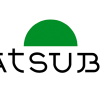In response to the calls to ban bitcoin that inevitably arose in the wake of this episode, we like to point that far more illegal activity and money laundering occurs in dollar notes, which are much harder to trace than bitcoin transactions. Cryptographically-secure digital cash being trialled by Circle, Gemini, and Paxos utilizes permissioning, a concept that Circle’s Jeremy Allaire said was impossible in 2015 – “they’re not possible separately” – and I predict that as those USD coins seek to add throughput capacity and functionality they will migrate off of the Ethereum chain and onto their own public, permissioned chains which are direct conceptual descendants of Eris’ work. Are the authors claiming that Lehman Brother’s ledgers were being maliciously modified and manipulated? Also, there are plenty of governance issues involving “permissioned chains” – but those are typically tangential to the technical challenges and limitations around scaling a blockchain. Now, it will undoubtedly be a major challenge to get the institutions that until now have been entrusted with securing our data systems to let go and defer security to some decentralized network in which there is no identifiable authority to sue if something goes wrong. Hong Kong’s role will be important: the territory’s British legal traditions and reputation for respecting property rights have made it a respected safehouse for managing intellectual property and other contractual obligations within international trade.
While it’s quite possible that many ICOs will fall afoul of securities regulations and that a bursting of this bubble will burn innocent investors, there’s something refreshingly democratic about this boom. We see that in other cryptocurrencies and blockchain-related development efforts including Ethereum. A group of banks including BBVA, CIBC, ING, Societe Generale, and UBS has already developed such a proof of concept in conjunction with blockchain research outfit R3 CEV. But a group of miners with real clout was having none of it. To avoid these distortions and create a cryptocurrency that works more like fungible cash, Wilcox’s Zcash uses sophisticated “zero-knowledge proofs” to allow miners to prove that holders of the currency aren’t’ double-spending without being able to trace the addresses. Hundreds of coins have died due to lack of interest by miners and developers. You cannot simultaneously have a cheap (“efficient”) and secure PoW network… In addition to, what do the authors mean by “cheap distributed network model” when they have (rightly) mentioned that proof-of-work is resource intensive? On the other hand, this could result in a private company taking a technology that could have been used publicly, broadly for the general good, and hiding it, along with its innovative ideas for tokens and other solutions, behind a for-profit wall.
An additional point is that again, proof-of-work chains can and have been forked over the years. So again, to be consistent they likely should remove “low-cost” in other places. This is why it would be important for the authors to explicitly mention what “blockchain” they are referring to. In practice, most of these farms are located in basically the same type of structure and geography as ASIC-based equipment… Lastly, it would be worth exploring in the next edition what Dapps are currently being used on a regular basis. Also, it is unclear why the worlds supply chains should for some reason be connected onto an anarchic chain: what is the benefit of putting this information onto a chain whose operators are unaccountable if a fork occurs? If an attestation of identifying information is locked into an immutable blockchain environment, it can’t be revoked, not without both parties agreeing ot the reversal of the transaction. Can’t wait? Scroll down to Chapter 6 and also view these specific tweets for what that means. On p. 198 they discuss a startup called WeTrust and mention that one of the authors – Michael – is an advisor. And discuss how trust is a “vital social resource” and then mention hyperinflation in Venezuela.
And that, essentially, is the service that blockchains provide to people. Ludwin, whose clients include household names like Visa and Nasdaq, said he could understand why people saw a continued market for cybersecurity services, since his audience was full of people paid to worry about data breaches constantly. Why should commerce be captured by pseudonymous, unaccountable validators maintained in jurisdictions in which legal recourse is difficult if not impossible? Might be worth adding a comparison table in the next edition. This stat is worth looking at again in future versions, especially in light of less-than-favorable reviews. See my other book reviews on this topic. Unclear but we’ll probably see some court cases if real large loses take place due to forks. Lastly, someone does in fact own each of the computers that constitute the Ethereum blockchain… How does a 3D printer connected to a blockchain prevent a president from executing on their agenda?





